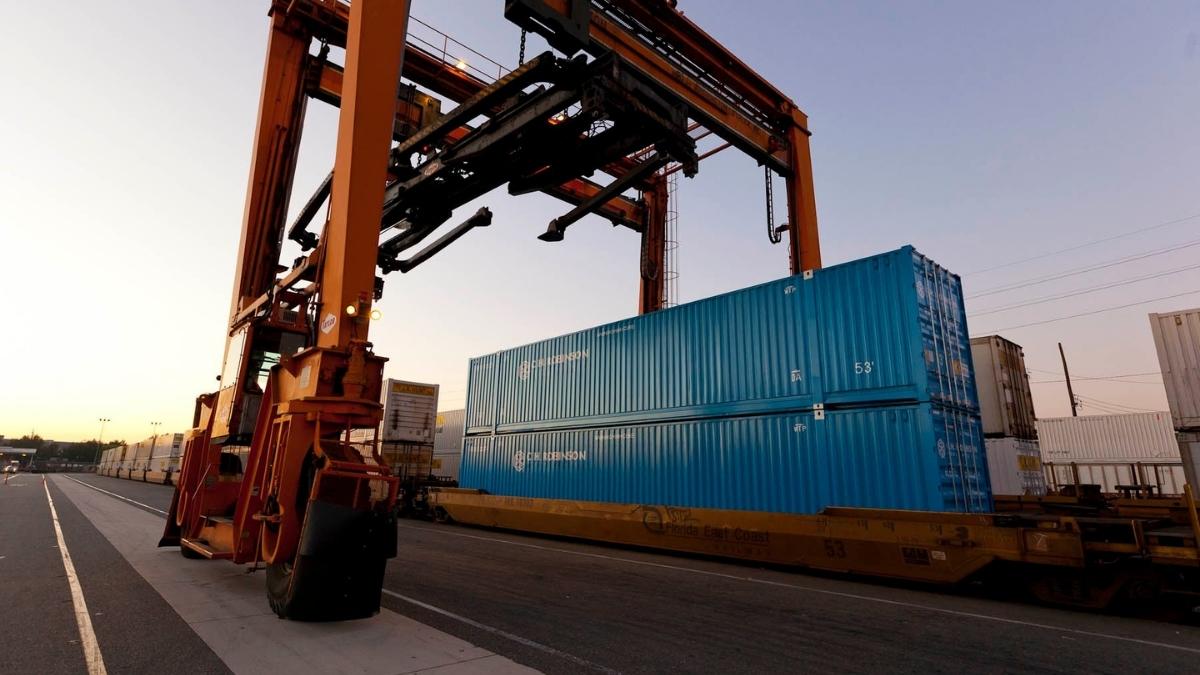
Global supply chains are under more strain than ever. From shifting trade policies and tariffs to unforeseen disruptions like port congestion or geopolitical conflict, companies can no longer rely on single-source strategies to keep goods moving. Fortunately, there are several supply-chain redesign strategies available to companies looking to build resilience against trade volatilities.
One long-term strategy is to build a sourcing hierarchy, where companies prioritize sourcing locations based on geopolitical realities, business continuity and cost efficiency. A typical hierarchy consists of the core import market, peripheral markets close to the core import market, friendshoring to ally markets, nearshoring to peripheral regions near the end market, and reshoring back to the end market.
But building such a hierarchy and implementing it full-scale could take 3–5 years, requiring extensive resources, professional support, and careful analysis of trade-offs in costs and benefits. In the meantime, many businesses need faster solutions. That’s where dual sourcing comes in.
By procuring identical items from two suppliers (e.g., China + Vietnam, or Mexico + Asia), companies keep their incumbent base while adding backup capacity for critical components. In less than a year, dual sourcing can help companies stabilize supply, reduce risk, and manage costs more effectively.
At C.H. Robinson, we’ve seen how this plays out in practice. When a key customer in the automotive industry faced the challenge of establishing a short-term mitigation strategy against unpredictability, C.H. Robinson offered AI-enabled tariff tools, logistics network design expertise and item-level visibility tools to help effectively implement dual sourcing.
And this approach is becoming the norm: managing 37 million shipments across the globe annually, we have observed an over 300% surge in supply chain design projects utilizing item-level data over the past three years.
The three pillars of dual sourcing success
To succeed with dual sourcing, however, shippers need a different set of logistics management tools to address the added complexity of vendor networks, high SKU counts, the urgent need for PO-level integration and customs agility. These challenges can be approached from three critical dimensions:
1. Trade compliance agility
Navigating trade compliance presents significant challenges, including HS code mismatches and complex dual-origin rules under agreements like USMCA and RCEP. Additionally, businesses must contend with tariff stacking and rapidly changing in-transit cargo regulations. Starting in August 2025, companies sourcing from multiple countries will face even greater complexity, needing to track two to three times more tariff rate categories.
To address these challenges, AI-driven customs optimization tools can help by identifying tariff-minimizing routing strategies. Solutions like our U.S. Tariff Impact Analysis Tool simulate tariff scenarios and clearly map applicable rates for each product, enabling businesses to proactively adjust their supply chains. In a recent case, this approach helped a client reroute 15 in-transit containers, avoiding $6 million in unexpected tariffs.
2. Logistics network design
Optimizing logistics network design presents key challenges, particularly in managing split inventories across regions, balancing air freight (speed) versus ocean shipping (cost) and navigating infrastructure gaps in emerging hubs.
Managing such complexities requires agile multi-corridor networks. For example, a China-Vietnam-Mexico air-ocean blend can optimize efficiency. Regional hub strategies like the "Country+1" diversion model can help reroute goods through near-region hubs during disruptions. For instance, enhancing flexibility through Southeast Asia’s dual hub model (Vietnam for electronics and Thailand for automotive) or alternate North American gateways (e.g., Lázaro Cárdenas vs. Los Angeles/Long Beach ports).
Pre-negotiated capacity at key transshipment hubs, such as Singapore, and a multi-modal mix that combines air, ocean and rail can further build resilience and ensure schedule reliability amid disruptions.
3. Item-level visibility
Ensuring item-level visibility is crucial for managing split orders across multiple suppliers and regions, which is a common challenge in dual-sourcing strategies. Without real-time tracking, companies risk delays, cost overruns, and compliance issues.
The solution lies in data-driven supply chain visibility, powered by real-time PO/SKU tracking and cost-allocation dashboards. Between 2023 and 2024, the volumes handled through our item-level digital Purchase Order management tools grew 20x, with projections to double again in 2025, underscoring how shippers are investing in tools that enable faster, more flexible sourcing decisions. This granular visibility enables a detailed cost breakdown, separating product, freight, warehousing, and other expenses to calculate accurate landed costs.
The future of resilience
Dual sourcing is no longer just a survival tactic—it’s a competitive differentiator. As AI-and predictive analytics advance, companies will be able to run dual-sourcing simulations that weigh tariff exposure against lead times, enabling even smarter decisions. The question is no longer if companies should diversify suppliers, but how fast.
And in a world where speed and agility matter, having the right logistics partner makes all the difference. If your organization is considering dual sourcing or exploring broader supply chain redesign, our experts are here to help you evaluate options and put strategies into action.



